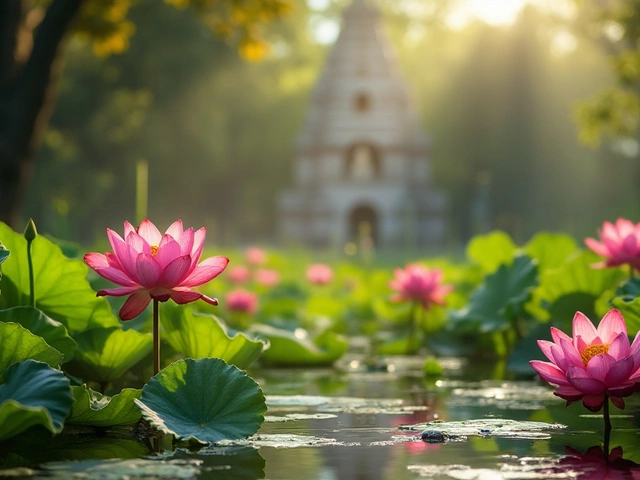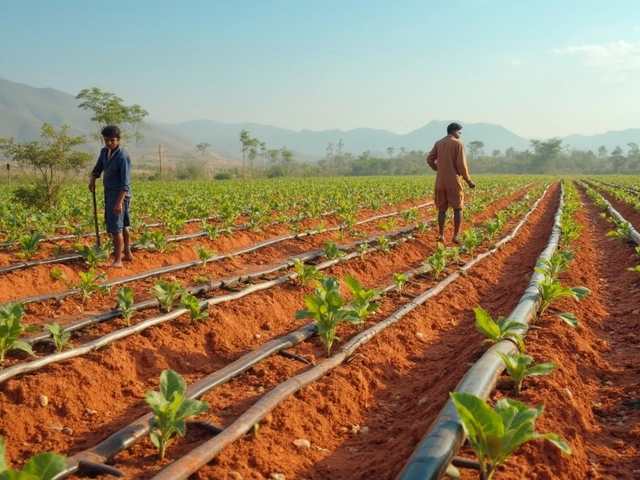Drip Tubing Depth: How Deep Should You Lay It?
If you’ve set up a drip system, you already know how much water you can save. But many gardeners skip the most important step – figuring out how deep to bury the tubing. Too shallow and the pipe gets chewed, sun‑burned, or knocked out of place. Too deep and you waste time, effort, and sometimes water. Let’s break down the sweet spot so your garden gets steady moisture without extra hassle.
Why Depth Matters
Drip tubing delivers water right where the roots need it. When the pipe sits right below the soil surface, the water seeps straight into the root zone. Bury it deeper than a few inches and the water must travel farther, which can slow absorption and cause runoff. On the other hand, a shallow line is exposed to foot traffic, garden tools, and animals – all of which can damage the tube and cause leaks.
Best Practices for Burying Drip Tubing
1. Aim for 2‑3 inches deep. In most Indian garden soils, a depth of about 2 to 3 cm (roughly an inch) works well for vegetable beds, while 5‑7 cm (2‑3 inches) is ideal for lawns or mulched areas. This depth protects the tube from sun and foot traffic while still letting water reach the roots quickly.
2. Adjust for soil type. Sandy soils drain fast, so bury the tubing a bit deeper to keep it from moving. Clay soils hold water longer, so you can stay closer to the surface. If your garden has mixed soil, pick a middle ground and monitor moisture levels.
3. Use a soil marker. When you dig a trench, lay a small stick or ruler beside it. That way you always know you’re not going too deep, especially if you’re working in a hurry.
4. Mulch over the line. After you place the tubing, cover it with a thin layer of straw, wood chips, or compost. Mulch keeps the soil moist, reduces temperature swings, and adds an extra shield against damage.
5. Check for obstacles. Before you dig, look for existing roots, stones, or irrigation lines. Hitting a large root can cut the tubing, leading to leaks you’ll have to fix later.
Most gardeners find that a depth of 2‑4 inches strikes the right balance. If you’re installing a drip tape for a row crop, follow the manufacturer’s recommendation – they often suggest 4‑6 inches for weed control, especially if you plan to use pre‑emergent herbicides.
Remember, the goal is to keep water where the plants can use it fast. Test a spot by watering the line and feeling the soil a few inches away. If it stays dry, you may have buried it too deep.
Finally, don’t forget to flush the system after installation. Run water for a few minutes to confirm there are no blockages and that the flow reaches the farthest emitters.
With the right depth, your drip system will last longer, use less water, and keep your garden thriving throughout the season.
How Deep Should Drip Irrigation Lines Be Buried? Guide for Optimal Water Delivery
Learn the right burial depth for drip irrigation lines, factors that affect it, and step‑by‑step installation tips for healthy gardens.
About
Drip Irrigation
Latest Posts


Drip Tape vs Drip Line: The Ultimate Guide for Efficient Watering
By Alden Thorne Jul 21, 2025

Exploring India's Sacred Lotus: A Symbol of Purity
By Alden Thorne Jan 19, 2025

Does a Roof Terrace Add Value? Real-Life Perks & Smart Tips
By Alden Thorne May 20, 2025

